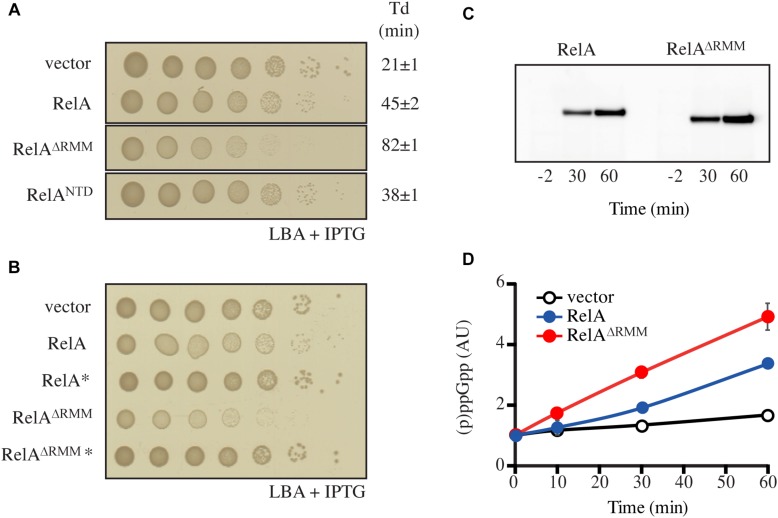FIGURE 4.
Truncation of RelA leads to accumulation of (p)ppGpp. (A,B) E. coli MG1655 cells were transformed with low copy IPTG inducible vector, pNDM220 (vector), pNDM220:relA, pNDM220:relA∗, pNDM220:relAΔRRM, pNDM220:relAΔRRM*, or pNDM220:relANTD. Ten-fold serial dilutions of overnight LB cultures were made and spotted onto LB agar (LBA) supplemented with 30 μg/ml ampicillin and 1 mM IPTG. Loading controls are presented in Supplementary Figure S6B. (C) E. coli MG1655ΔrelA transformed with pNDM220:relA or pNDM220:relAΔRRM were grown at 37°C to OD600 0.5, before 1 mM IPTG was added for plasmid induction. Samples were withdrawn at the mentioned times (minutes after induction) and western blotting was performed as described in the experimental procedures. (D) E. coli MG1655 carrying pNDM220 (vector), pNDM220:relA, or pNDM220:relAΔRRM were grown exponentially in MOPS minimal medium with 30 μg/ml ampicillin before 1 mM IPTG was added, for plasmid induction at time 0 min. The curves represent the average fold increase of (p)ppGpp for two independent measurements and the error bars represent standard errors. The levels of (p)ppGpp were normalized to the pre-starved level (–2 min) for each strain.

